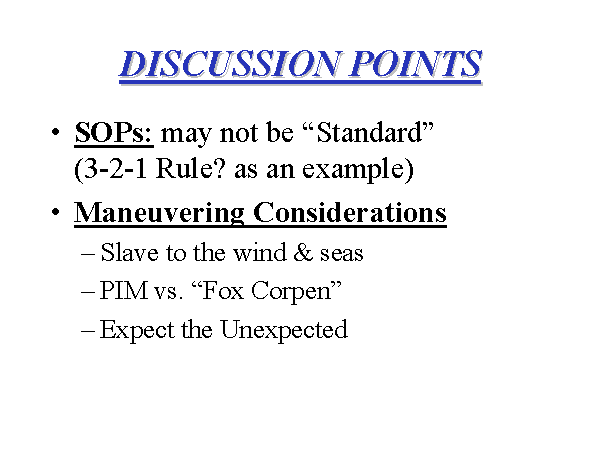Slide 59 of 62
Notes:
- Maneuvering characteristics for CVs, CVNs, LHDs & LHAs will be different, as well as the types of ops they will conduct with ships in close proximity. Each aviation ship(CV/CVN/LHA/LHD) will probably have a standard operating procedure which will be unique to that particular ship. An example of differences between SOPs is how they define the 3-2-1 rule. Some use nautical miles others use thousands of yards, while others use a 6-4-2 rule with the same variations on the theme (Kyds or NMs). Some SOPs are very detailed & lengthy while others are at the other end of the spectrum.
- Generally, when in plane guard, when the aviation ship turns right the plane guard turns left to cross the wake and then moves back into station when the aviation ship is on a steady course. Conversely, when the aviation ship turns left the plane guard ship follows the turn remaining outside the wake, regaining station when on a steady course. Following the commencement of flight operations the aviation ship may change course and speed frequently to maintain required winds to support launching and recovery of aircraft. Many times the aviation ship may attempt to keep their plane guard advised of these changes but the tempo of operations may make this impractical at times. Plane guard ships are expected to maintain station regardless of the forewarning (or lack there of) - VIGILANCE is the key. At the completion of flight operations a number of things may happen, most without warning such as radical turns and high speeds to regain PIM or reposition for the next SOE event; engineering drills; launching of boats or other craft; or propulsion plant testing. Expect the unexpected - the aviation ship may have forgotten you are back there!















